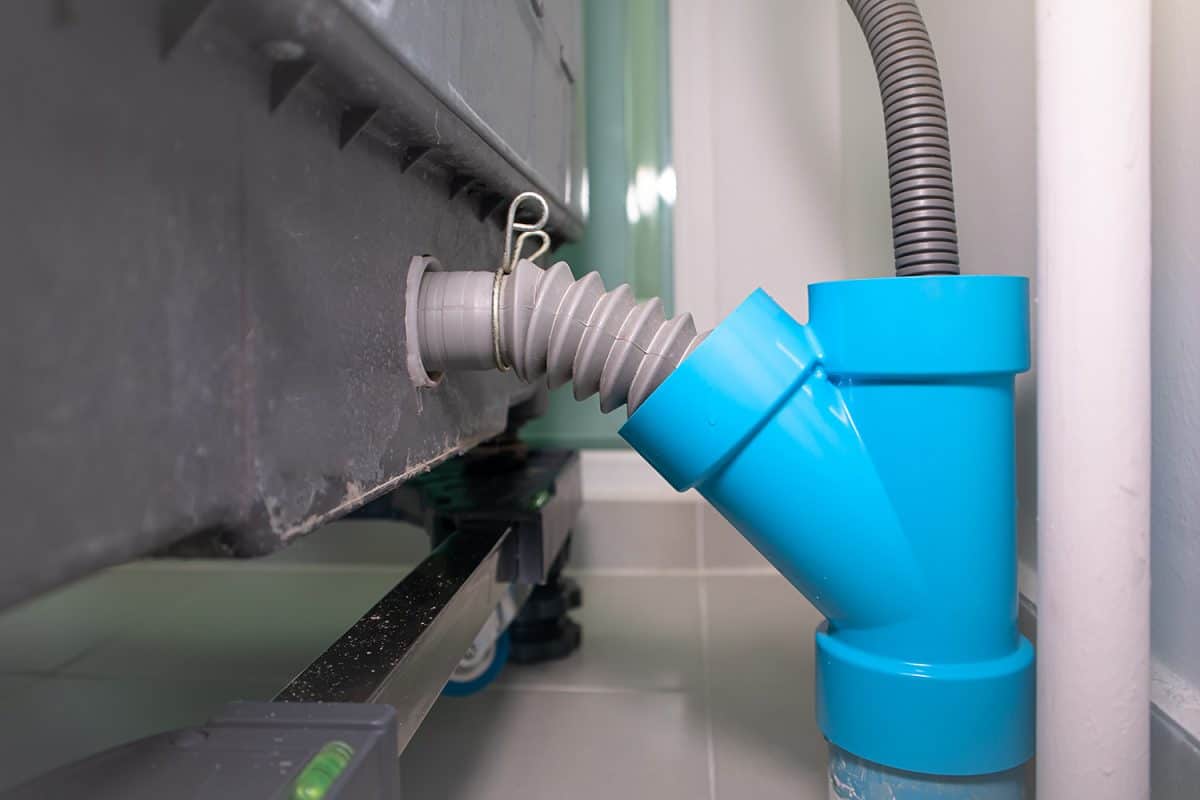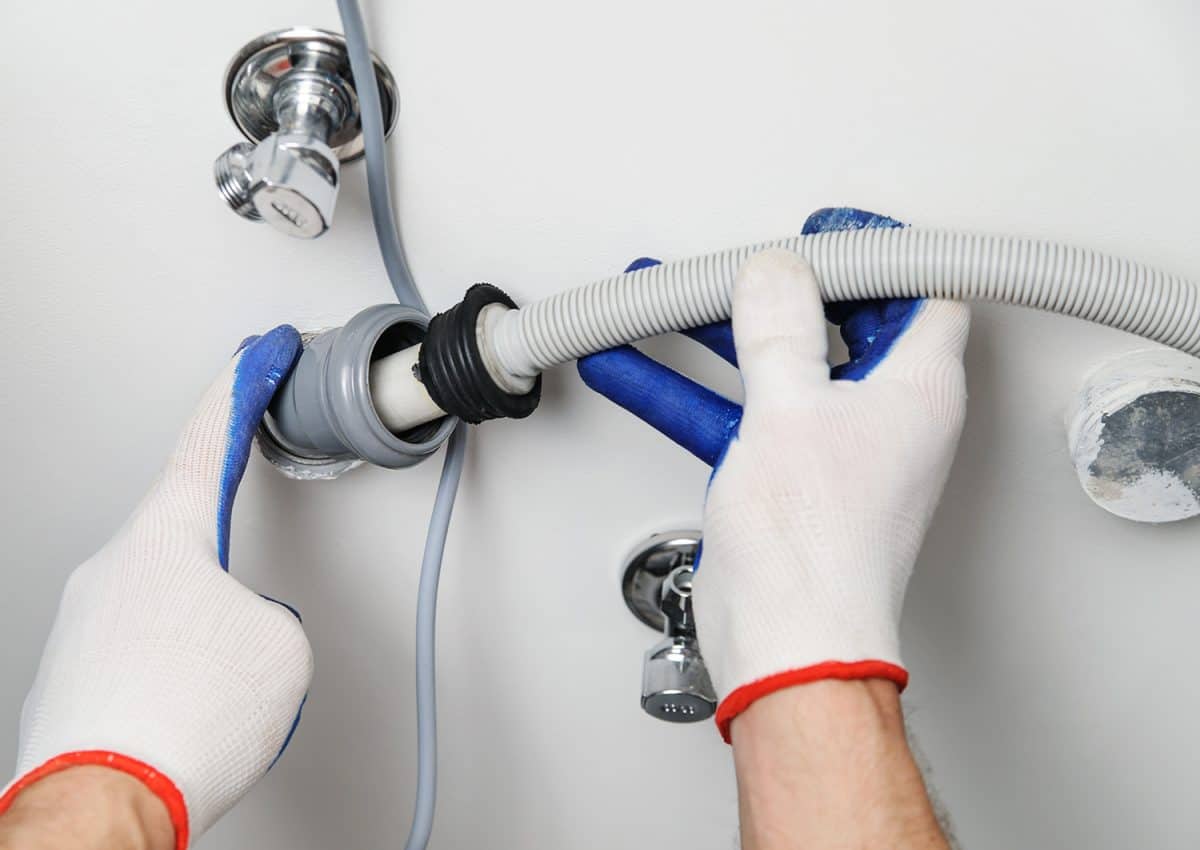Are you wondering why your washing machine drain needs to be vented and why this is important? Well, we researched on your behalf to inform you why it is necessary to vent the drain of your washing machine and how to install it.
Venting the drain of your washing machine prevents sewer gases from escaping into your home, allows fresh air into the system, and improves the flow of water and pipe drainage.
Your machine sharing one vent with another plumbing fixture in your home is one way of installing the vent. But you could also have a separate vent just for your washing machine.
Keep reading to learn the reasons for venting your washing machine drain, including the factors you need to address before venting the drain. Learn how to install the vent, and we have provided a guide on the related costs.
Reasons For Venting The Drain Of Your Washing Machine

All plumbing fixtures must be vented, as well as your washing machine. Have you ever poured water from a can and noted that it did not flow out evenly? A second opening to let in the air is required.
This is exactly what happens when water flows out of a drain. For water to flow out evenly, air is needed to balance the pressure inside the drain pipe.
Air enters through the vents and into your washing machine and other plumbing fixtures in your home, allowing the water to drain away smoothly.
But what is a vent? Sometimes called a vent stack, it is a vertical pipe connected to the drain line that goes up to and through the roof. You can also find these vertical vents standing above the ground.
How To Vent A Drain Pipe

There are several ways of venting the drain pipe of your washing machine.
First, if it does not have an air gap around the drain pipe at the point it enters the drain, you most likely don’t need to install a vent. This is because there’ll be enough air in the drain pipes.
But, if this is how you prefer to vent your drain pipe, then you may install one.
You can opt to connect your washing machine and several other plumbing fixtures in your home to one vent.
Even so, ensure to connect the flood-level rim of the topmost fixture. Lastly, you can decide to have a separate vent for your washing machine.
Let’s explore the following method:
One Vent Connecting A Washing Machine And Sink
If you prefer connecting your washing machine and another fixture, such as the kitchen sink, to one vent, the steps to install a vent include:
Connect The Washing Machine And Sink
Have a look at this ABS cement on Amazon.
- While maintaining at least ¼ inch per foot slope toward the sewer, run a 2-inch ABS drain pipe into the sewer. Use a sanitary tee or wye fitting to tie it into the sewer.
- Place the drain end in the middle between the sink and washing machine. But, this is only if the distance is less than 10 feet apart. Connect a 2-inch ABS sanitary tee to the drain inlet using glue such as ABS cement shown above.
- Onto each end of the sanitary tee horizontal ports, attach 2-inch pipes. Fix one line to the washing machine trap and the other to the sink trap. With a suitable ABS drain fitting, connect a 2-inch pipe to the top port and extend it to the main vent stack.
- Position the opening of the drain so that it is within five feet of the sink or the washing machine if they are more than ten feet apart. Take a double sanitary tee and connect it to the drain. Next, extend 2-inch pipes from the tee to the washing machine and also to the sink.
Fix The Vent Pipe Outlet
Check out this long-sweep elbow on Amazon.
- After connecting the sink and the washing machine, fix a vent pipe to the top outlet, which extends close to 1-foot above the drain opening of the washing machine or sink.
- Using a hacksaw, cut the waste line that is the longest of the two. Fix a sanitary tee, and attach a vent pipe to the port that’s perpendicular. Ensure the distance is equal to the other vent pipe.
- Connect a 2-inch sanitary tee on top of one pipe, and on the other one, fix a 2-inch long-sweep elbow. Join these two fittings with a pipe.
- Finally, extend the vent that’s on top of the sanitary tee to the main vent stack, tying it in using a 2-inch sanitary tee.
Factors To Consider When Installing A Vent To Your Washing Machine Drain

The following are some factors you need to consider before you install a vent to the drain in a washing machine. They include:
Location Of Vent
If your washing machine is in the basement, the vent duct should run up, passing through the rim joist and exterior wall.
The vent ought not to be less than 12 inches above the ground. But, if your machine is on a floor above the basement, you can run the vent through the attic and the roof.
However, installing the vent through the roof should be the last option because birds and squirrels can build their homes.
Vent Size
Check out this P-trap on Amazon.
In general, washing machines need 2-inch drain pipes. P-traps also need to be installed on these machines and should be between 6 and 18 inches above the ground.
Those with standard pipes should be between 18 and 30 inches above the ground.
Slope Of Horizontal Vents
The slope of any drain line, including that of your washing machine, needs to be ¼ inch per foot of pipe. Each foot in a horizontal pipe should drop ¼ inch vertically.
If the slope of a drain is higher or less than ½ inch per foot, the drain is likely to clog. This is because the liquids travel too fast, leaving behind solid particles.
Vents Connecting Washing Machine And Other Plumbing Fixtures
As earlier mentioned, when connecting more than one plumbing fixture to one vent, connect them above the flood-level rim of the fixture that’s the topmost.
Benefits of Venting Your Washing Machine
![Benefits of venting your washing machine, Does Washing Machine Drain Need To Be Vented [Inc. Why And How To]?](https://uooz.com/wp-content/uploads/2022/09/Benefits-of-Venting-Your-Washing-Machine.jpg)
Whereas the building code in your area may not require you to vent your washing machine, it still has its benefits. They include:
Prevents Water From Overflowing
Without a vent, your washing machine will drain water slowly, causing it to overflow.
Prevents the Creation Of A Vacuum
Vents allow in air, preventing a vacuum from forming in the drain. The vacuum can interfere with the normal flow of waste.
Protects Health And Potential Fire
Gases that come from the sewer can harm your health when inhaled. But, the P-trap in the drain stops these gases from entering your home, while some can be inflammable.
Stops Negative Pressures From Pulling Water Out
Negative pressures stop the water from being pulled out. But with a vent, this can be avoided.
Cost Of Venting The Drain

Generally, the cost to install a plumbing vent ranges from $79.88 to $239.63 for each vent line. Supplies for a venting job, such as mounting hardware, fittings, and connectors, typically cost between $85 and $96.
Hiring a professional to vent your pipe costs between $45 and $200 per hour. With a professional, your job will be under warranty. But, you could also hire a handyman who is not licensed.
They charge less at $60 to $125 per hour. However, a handyman’s job is not warranted.
In Closing
It is important to vent the drain of your washing machine, just as you do other plumbing fixtures in your home. It prevents overflowing of water and sewer gases from entering your home.
Before venting your drain, there are several factors you need to consider. They are a guide that assists you in successfully installing a vent.
Even though the building code in your area does not require you to vent your washing machine, it has benefits that may encourage you to do so.
Below are more of our previous posts you may want to read:
Why Does Water Pressure Drop When Washing Machine Is Running?



